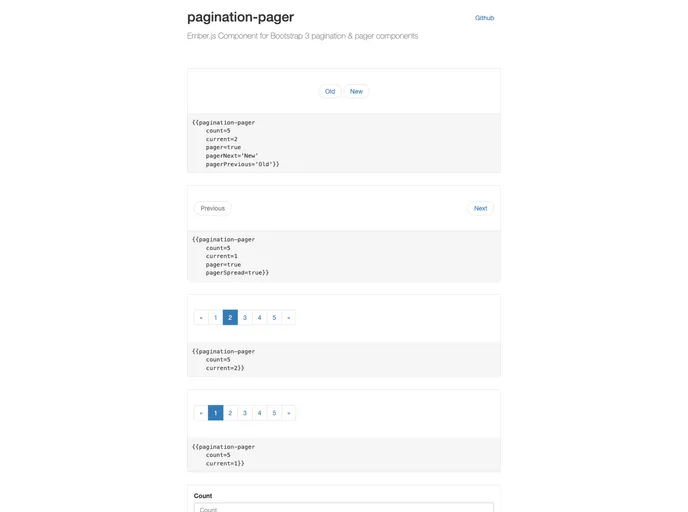
Ember.js Component for Bootstrap 3 pagination & pager components
The Ember Component for Bootstrap 3 Pagination & Pager is a powerful tool designed for developers looking to implement pagination in their applications seamlessly. Built for compatibility with Ember.js v3.12 and above, this robust component allows users to navigate through multiple pages effortlessly. With its strong adherence to the original Bootstrap components, it provides both a familiar look and extensive customization options.
This pagination component is not just functional; it also offers flexibility for developers with various configurations and settings, making it easy to manage how users interact with content across pages. Whether you need a simple pagination system or a more intricate pager layout, this Ember component has you covered.
firstPage and lastPage options, allowing for tailored user experiences.pager attribute to true, suitable for applications needing simplified navigation.urlTemplate option to create custom URLs, facilitating direct access to specific pages in the format required.@hide and @autoHide allow you to manage the component’s visibility depending on certain conditions, improving UI cleanliness.@paginationNext, @pagerPrevious, and more to meet your app’s tone.@change action provides flexibility to manage page changes, returning both the current and previous page for adaptive user interactions.